34 Timeless Classics Driven By The Straight Eight Engine
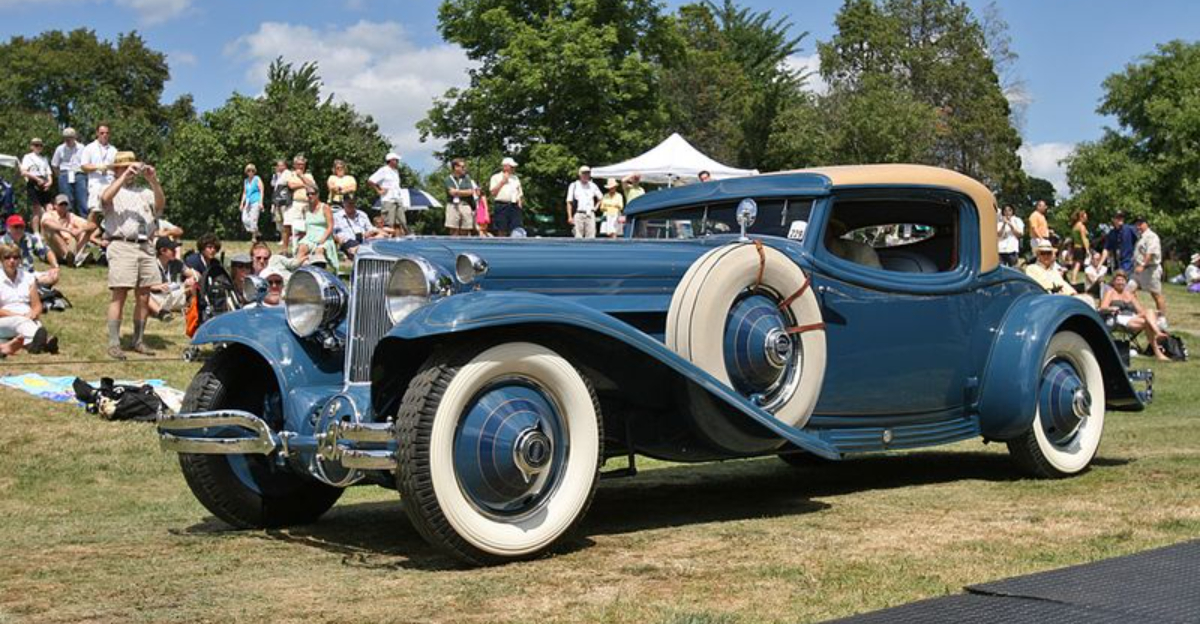
Back in the golden age of motoring, nothing whispered ‘luxury’ quite like the purr of a straight-eight engine.
These magnificent powerplants—with eight cylinders arranged in a single row—delivered the silky-smooth performance that defined automotive excellence from the 1920s through the 1950s.
Before V8s took over, these engineering marvels powered some of the most glamorous machines ever to grace America’s highways.
1. Duesenberg Model J
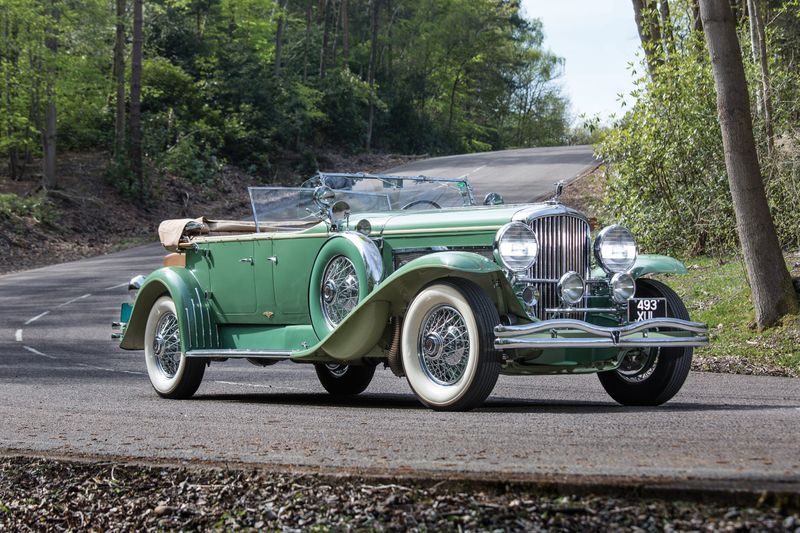
Royalty on wheels! The Duesenberg Model J wasn’t just a car—it was an American status symbol that made even European luxury marques bow in respect.
Launched in 1928, these magnificent machines packed a 265-horsepower punch when most cars struggled to hit 100.
With bespoke coachwork and astronomical price tags (around $20,000 when a new Ford cost $500), the Duesy became slang for ‘something extraordinary.’
Each engine was tested for 8 hours, signed by its inspector, and delivered automotive perfection.
2. Packard Super Eight

Whisper-quiet elegance defined every Packard Super Eight that rolled out of Detroit.
These weren’t just automobiles—they were statements of personal achievement, favored by doctors, bankers, and Hollywood royalty throughout the 1930s and 40s.
The straight-eight engine provided velvet-smooth acceleration that seemed almost magical for such substantial machines.
Packard’s legendary quality control meant these beauties often outlived their first (and second) owners. Their slogan wasn’t empty marketing: “Ask the man who owns one.”
3. Buick Roadmaster
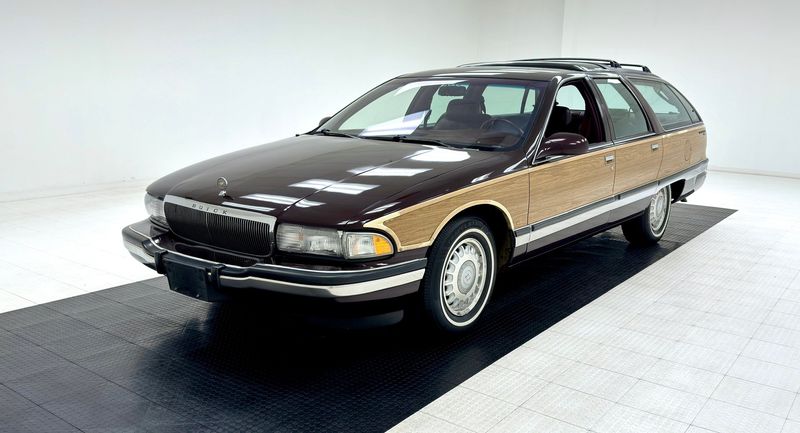
Nothing said “successful small-town physician” quite like a Buick Roadmaster parked in the driveway.
Introduced in 1936, this straight-eight beauty balanced luxury with practicality in a way that perfectly suited America’s professional class.
Under that mile-long hood, Buick’s “Fireball Eight” delivered power with such refined manners that competitors scrambled to match its smoothness.
The 1949 models featured swooping “pontoon” fenders and that iconic toothy grille—styling cues that defined an era. Woody wagon versions remain among the most coveted collector cars today.
4. Cadillac Series 355
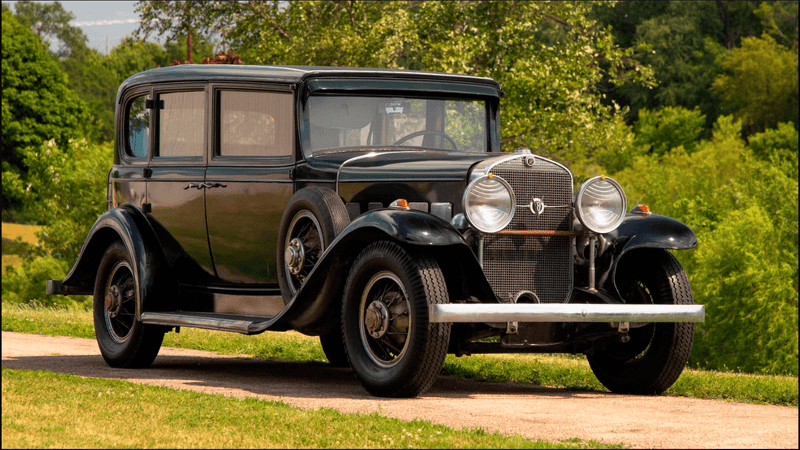
Opulence oozed from every curve of the Cadillac Series 355.
During the Roaring Twenties and into the Depression, these magnificent machines represented the pinnacle of GM’s engineering prowess, with their 353-cubic-inch straight-eight hearts beating beneath those impossibly long hoods.
Each engine was hand-assembled and tested before installation—a process more akin to watchmaking than typical auto manufacturing.
The 355-C of 1933 introduced GM’s revolutionary independent front suspension, making these luxobarges handle with unexpected grace.
5. Auburn 851
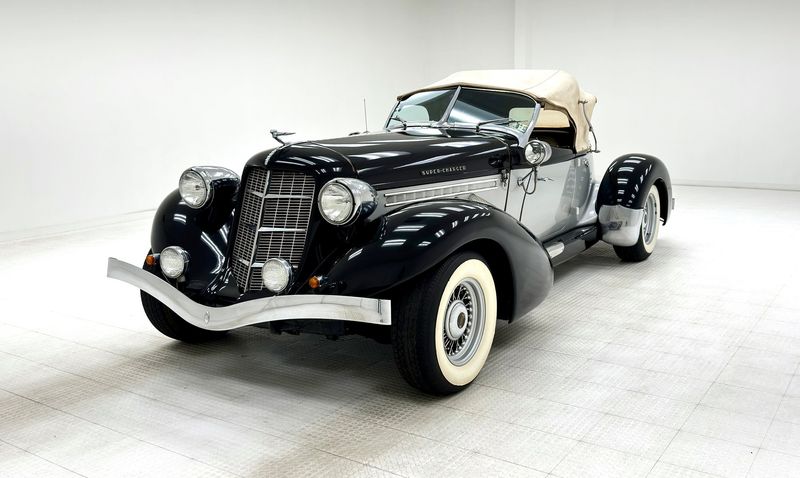
Zoom went the Auburn! With its Lycoming straight-eight engine force-fed by a Schwitzer-Cummins supercharger, the 851 Speedster could hit 100+ mph right off the showroom floor—complete with a dash plaque certifying this capability.
Styled by the legendary Gordon Buehrig, these Art Deco masterpieces featured pontoon fenders, rakish windscreens, and boattail rear ends that turned heads everywhere.
Despite being born during the Depression’s darkest days, the 851 represented automotive optimism and flair. Each one came with a guarantee of reaching the century mark—extraordinary for 1935!
6. Cord L-29

Engineering audacity in automotive form! The Cord L-29 wasn’t just another pretty face—it was America’s first successful production front-wheel-drive car, powered by a Lycoming straight-eight turned backward in the chassis.
This revolutionary layout allowed designer Alan Leamy to create a dramatically lowered profile without running boards—pure automotive sex appeal for 1929.
The Great Depression crushed sales, but these technical marvels influenced car design for decades.
With their long, low stance and distinctive coffin-nose hood, L-29s remain among the most distinctive classics of the pre-war era.
7. Pierce-Arrow Model 133
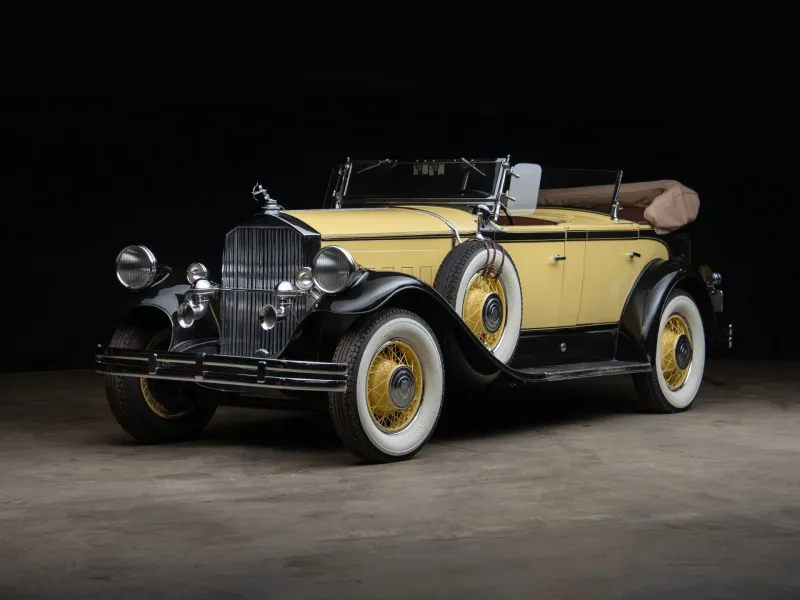
Majestic doesn’t begin to describe the Pierce-Arrow Model 133. These Buffalo-built behemoths represented American craftsmanship at its zenith, with their distinctive fender-mounted headlamps and imposing presence.
The straight-eight engine that powered these beasts was as smooth as aged bourbon and nearly as intoxicating.
Pierce-Arrow’s clientele included presidents, royalty, and Hollywood elite—customers who demanded silent operation and bulletproof reliability.
Each 133 required over 21 days to build, with craftsmen hand-fitting components to tolerances that would impress watchmakers. Truly automotive aristocracy!
8. Pontiac Streamliner
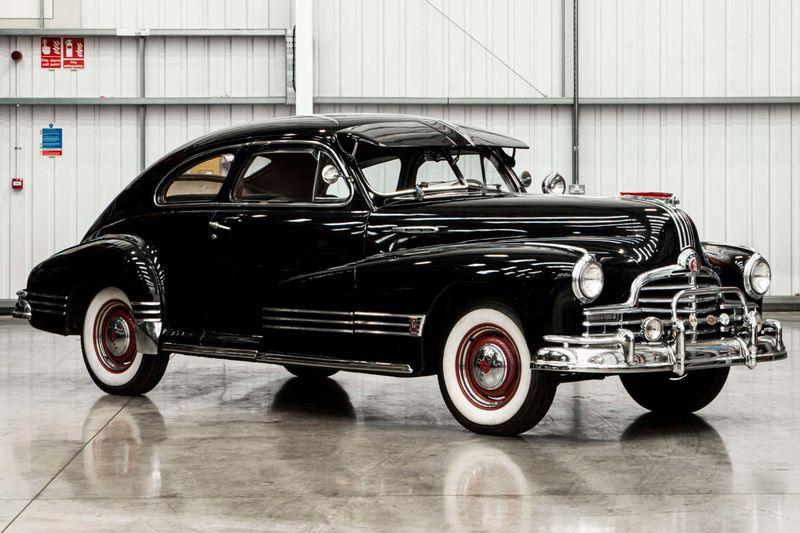
Swoopy, sleek, and surprisingly affordable! Pontiac’s gorgeous Streamliner brought straight-eight luxury down to middle-class price points in the immediate post-war years.
These beauties combined GM’s “torpedo” styling with a silky-smooth eight-cylinder engine that punched well above its weight class.
The woody wagon versions remain particularly coveted today—genuine mahogany and ash panels crafted by the same woodworking division that built Chris-Craft boats.
My grandfather still reminisces about his 1948 model, calling it “the best damn car America ever built.”
With their distinctive Silver Streak hood trim, these machines brought glamour to suburban driveways across America.
9. Hudson Commodore

Bulletproof reliability made the Hudson Commodore a favorite among certain “businessmen” who needed dependable transportation during hasty departures.
These machines combined the smooth power of Hudson’s 254 cubic inch straight-eight with innovative “step-down” design that created a lower center of gravity.
Bank robbers appreciated the spacious interiors that could accommodate five adults (or four plus certain banking equipment). Hollywood immortalized these machines in countless film noir classics.
The 1948 redesign was revolutionary—the floorpan sat between the frame rails rather than atop them, creating a car that handled like nothing else from the era.
10. Chrysler Imperial Airflow
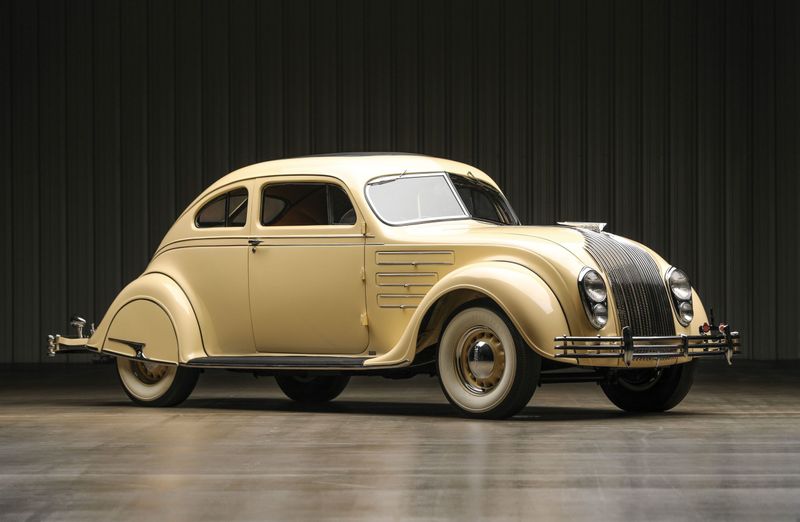
Decades ahead of its time, the Airflow scared traditional buyers with its radical streamlined shape when introduced in 1934.
Beneath that controversial skin lurked Chrysler’s magnificent 384 cubic inch straight-eight, mounted over the front axle rather than behind it—revolutionary for its day!
Wind tunnel testing influenced every curve, creating America’s first scientifically designed production car. Sales disappointed, but automotive historians now recognize the Airflow as a pioneering masterpiece.
Its semi-unibody construction provided exceptional rigidity while allowing that smooth straight-eight to push these aerodynamic marvels to speeds approaching 100 mph.
11. Lincoln Model K
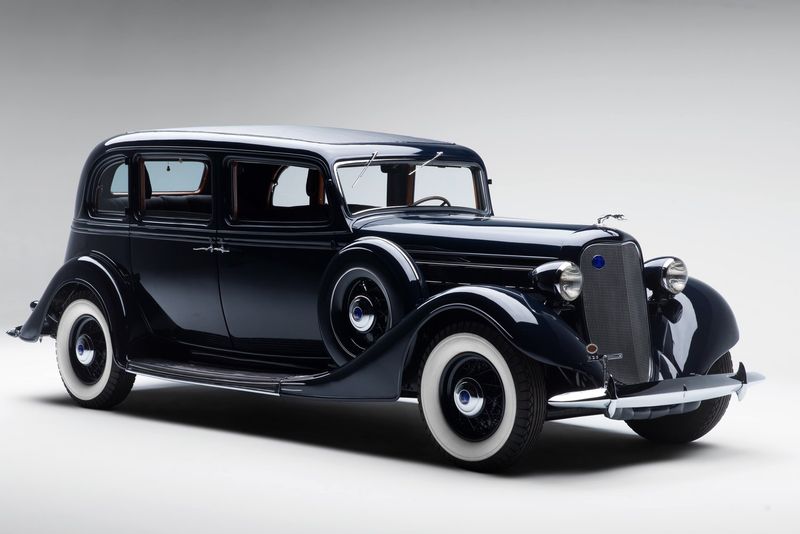
Presidential gravitas on wheels! Lincoln’s Model K served as the official White House vehicle during multiple administrations, its majestic straight-eight engine providing both power and appropriate dignity for America’s highest office.
Hand-built to exacting standards, these magnificent machines featured a 414 cubic inch engine developing 150 horsepower—enough to propel these two-ton-plus behemoths with surprising authority.
Coachbuilders like Brunn, Willoughby, and LeBaron crafted bespoke bodies for discriminating clients.
The Great Depression devastated sales, but surviving examples represent the absolute pinnacle of American pre-war craftsmanship.
12. Nash Ambassador Eight
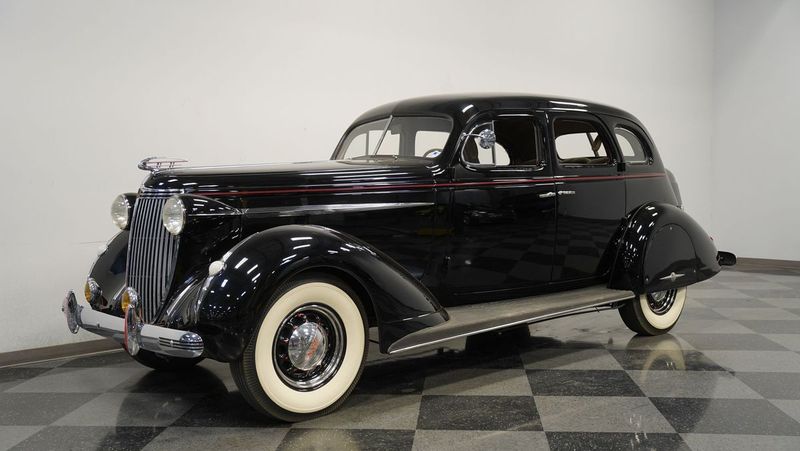
Unassuming yet magnificent! Nash’s Ambassador Eight combined conservative styling with surprisingly advanced engineering, including the company’s “Twin Ignition” straight-eight engine featuring two spark plugs per cylinder for improved efficiency and power.
These machines developed a devoted following among professionals who appreciated quality without flash. The 1932-1934 models are particularly prized by collectors today.
Nash pioneered numerous innovations, including the modern heating and ventilation system we now take for granted.
Their straight-eight engine continued to evolve through the 1940s, becoming one of the most reliable powerplants of its era.
13. LaSalle Series 50
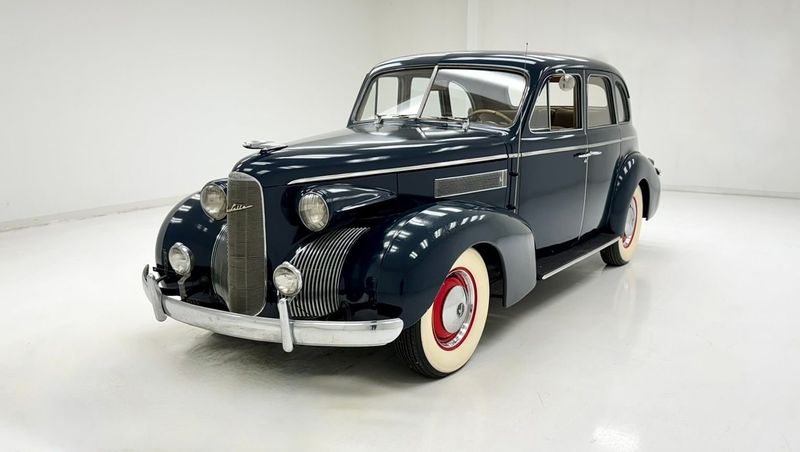
Harley Earl’s first masterpiece! The LaSalle Series 50 represented GM’s brilliant market strategy—offering near-Cadillac luxury at a price point accessible to successful professionals.
These machines combined European-inspired styling with a slightly smaller straight-eight engine derived from Cadillac’s larger units.
Introduced in 1927, LaSalle instantly established itself as America’s most fashionable car, with styling influenced by the great Hispano-Suiza. The brand served as Cadillac’s junior division until 1940.
14. Oldsmobile L-Series
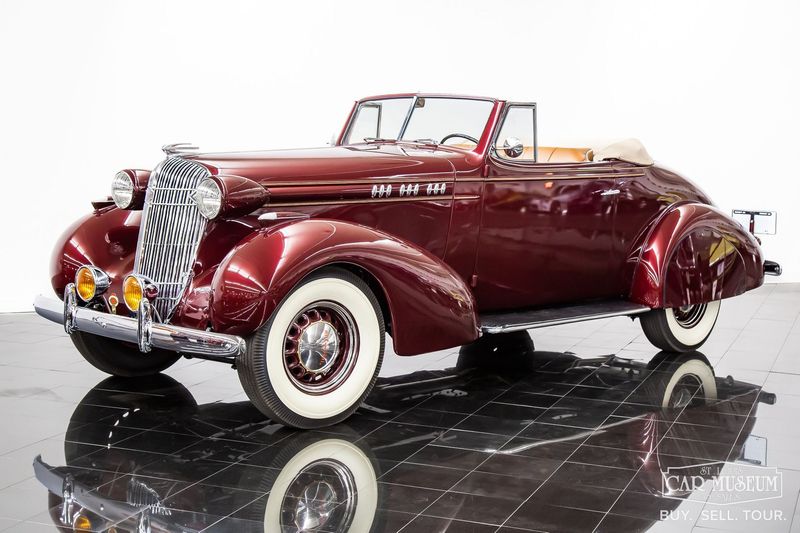
Conservative on the outside, surprisingly spirited under the hood!
Oldsmobile’s L-Series combined respectable styling with a high-compression straight-eight engine that delivered unexpected performance—earning these machines the nickname “Banker’s Hot Rods” among enthusiasts.
The 1937-1938 models featured distinctive “waterfall” grilles and flowing fenders that perfectly captured the streamlined aesthetic of the late Art Deco period.
Oldsmobile’s engineering department continuously refined their straight-eight, eventually developing it into one of GM’s most reliable powerplants.
15. Studebaker President
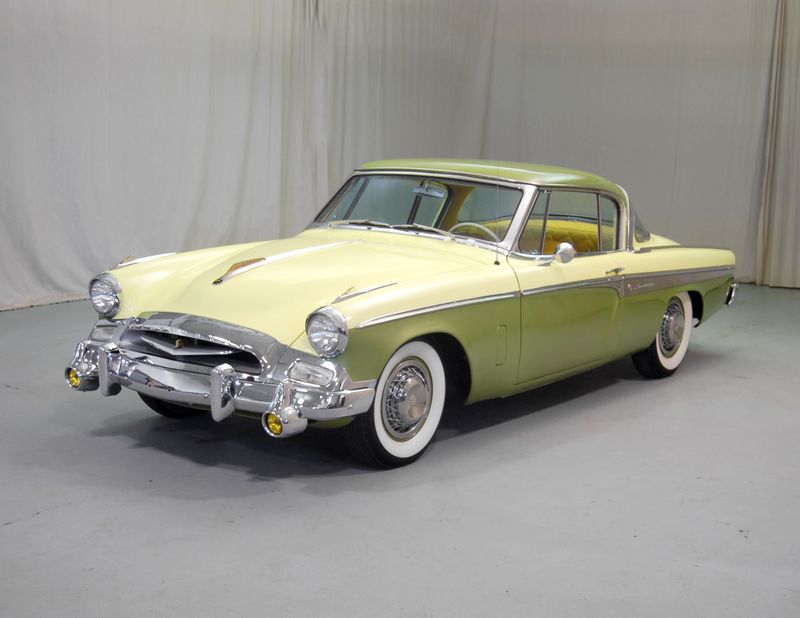
Speed records tumbled before Studebaker’s mighty President straight-eight!
In 1928, a stock President traveled 5,000 miles at an average speed of 68 mph—an astounding feat that cemented the model’s reputation for performance and durability.
Unlike many luxury cars, Studebaker’s flagship combined elegant styling with genuine sporting capabilities.
The 1931 models are particularly coveted for their perfect balance of pre-Depression craftsmanship and advanced engineering.
South Bend’s finest continued to evolve through the 1930s, with the straight-eight engine growing increasingly refined.
16. Hupmobile Eight
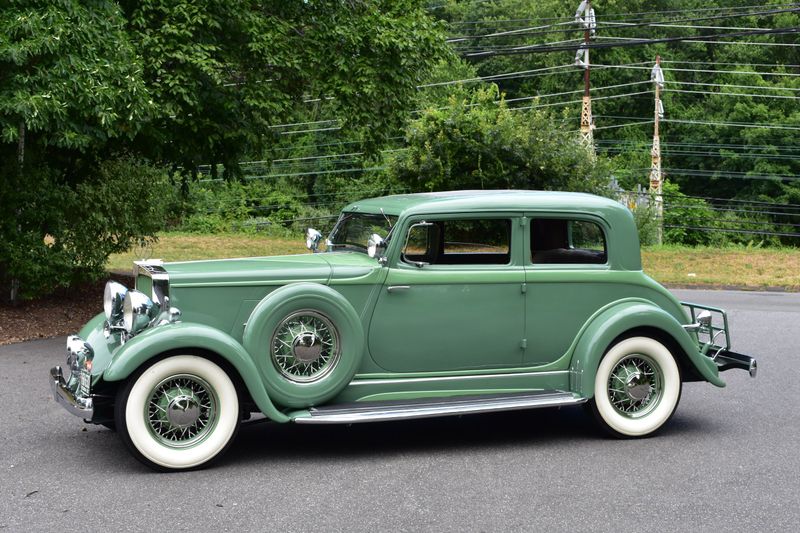
Criminally underappreciated! Hupmobile’s magnificent straight-eight models delivered Packard-level refinement at significantly lower prices, making them favorites among in-the-know professionals during the 1930s.
The company’s Century Eight models featured some of the era’s most progressive styling. Financial troubles plagued the company despite their engineering excellence, leading to their eventual demise in 1940.
Today’s collectors have rediscovered these mechanical marvels. Raymond Loewy’s stunning 1932 styling influenced automotive design for decades.
Each surviving example represents a fascinating automotive road not taken—a glimpse of what might have been had the Depression not claimed so many promising manufacturers.
17. Marmon Eight
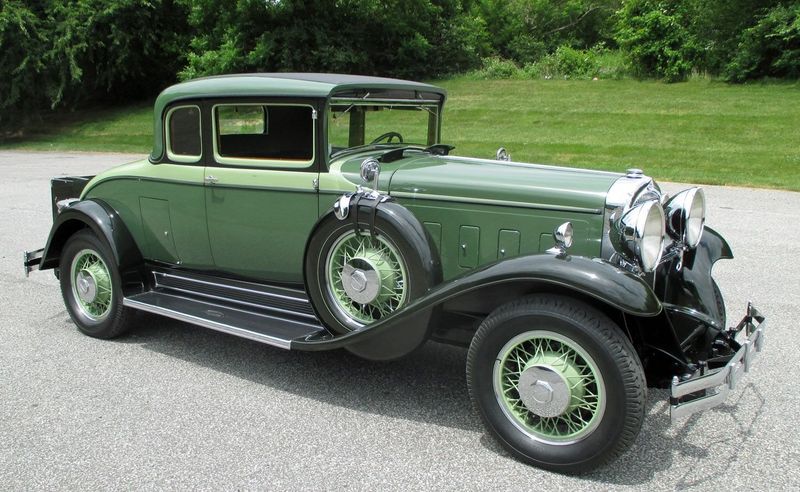
Engineering brilliance in automotive form! Marmon’s straight-eight models represented the pinnacle of American technical innovation, culminating in the magnificent Sixteen that overshadowed its equally impressive eight-cylinder siblings.
Founded by engineering genius Howard Marmon, the company pioneered aluminum components decades before they became common.
Their straight-eight engines featured overhead valves when flatheads dominated the industry.
The 1931 Big Eight models combined technical sophistication with understated elegance—cars for those who appreciated engineering over flash.
Financial troubles ended production in 1933, but surviving examples remain prized by collectors who recognize their technical significance.
18. Reo Royale
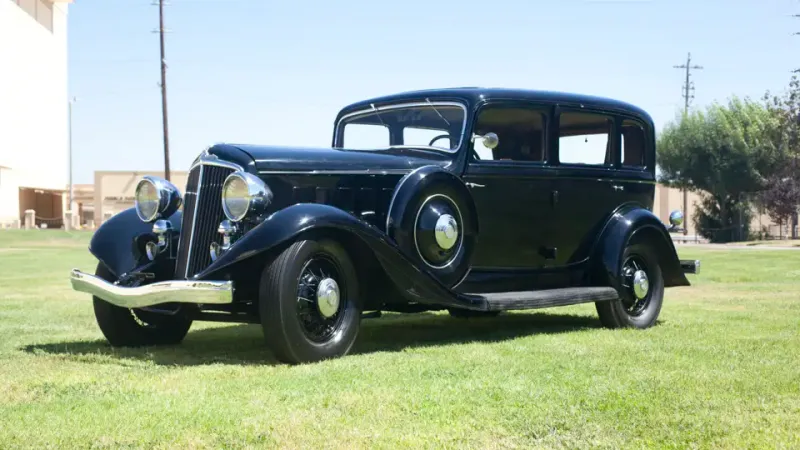
Automotive poetry from the mind of Ransom Eli Olds!
After leaving Oldsmobile, R.E. Olds created REO (his initials), eventually producing the magnificent Royale—a straight-eight powered luxury car that could compete with anything on the market.
The Royale featured a unique “Self-Shifter” semi-automatic transmission decades before such things became common. Its Flying Cloud straight-eight engine combined smooth power with exceptional reliability.
Introduced just before the Depression deepened, these technological marvels struggled in the marketplace despite their excellence.
Today, a Royale in your collection represents the pinnacle of independent luxury car manufacturing from America’s golden automotive age.
19. Graham Paige Model 827
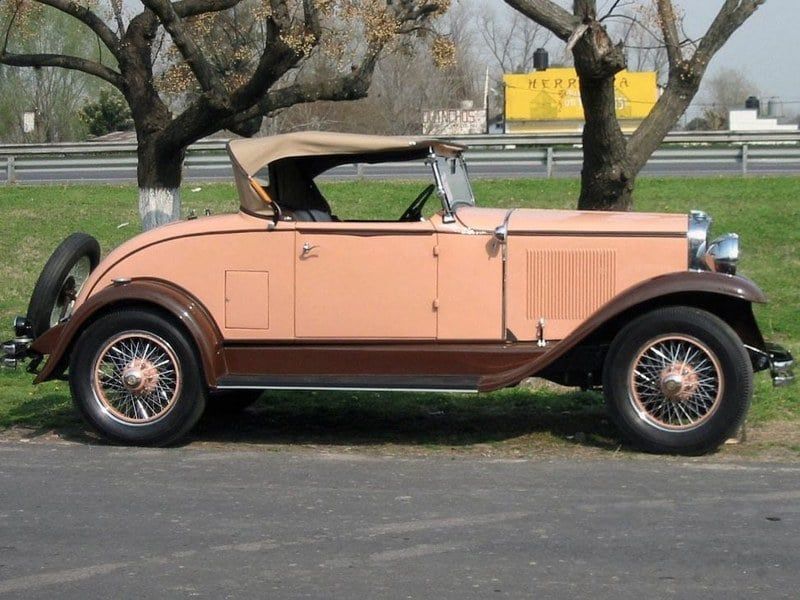
Boosted brilliance! Graham’s supercharged straight-eight models delivered performance that embarrassed many sports cars of the era.
The company pioneered supercharging for production vehicles, extracting impressive power from their relatively compact eight-cylinder engines.
The styling proved as advanced as the engineering, with streamlined bodies that looked like nothing else on American roads.
Graham’s famous “sharknose” front end of the late 1930s remains instantly recognizable.
Financial struggles eventually ended production, but not before these engineering marvels demonstrated how innovative an independent manufacturer could be.
20. Franklin Airman Series 130
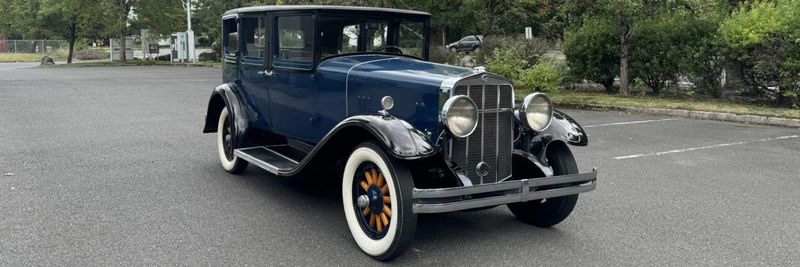
Unconventional brilliance! Franklin’s Series 130 straight-eight models featured something no other luxury car offered—air-cooled engines with no water pump, radiator, or coolant to freeze or boil over.
These engineering marvels operated with remarkable smoothness despite lacking the inherent balance of liquid-cooled designs.
Founded by engineering genius H.H. Franklin, the company built aircraft engines during WWI before applying that expertise to automobiles.
Their distinctive styling matched their unconventional engineering—full-wood frames and aluminum bodies kept weight down.
Despite numerous advantages, the Depression got rid of this innovative manufacturer in 1934.
21. Willys-Knight Eight
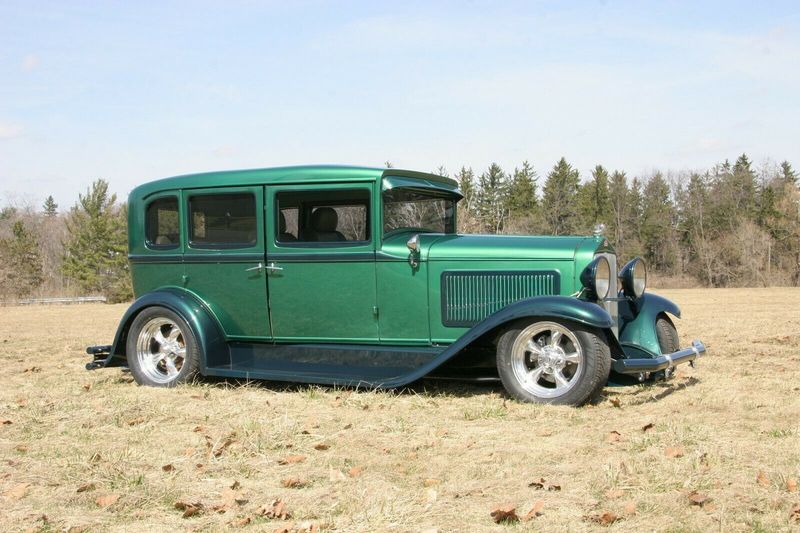
Forget everything you thought you knew about 1920s cars! The Willys-Knight Eight didn’t just drive down the road—it glided like a phantom thanks to its revolutionary sleeve-valve engine design.
No clattering valves here, folks. These mechanical marvels used sliding sleeves instead of conventional valves, creating an eerie silence that earned them the nickname “Silent Knight.”
Wealthy owners could actually hold normal conversations while cruising at 60 mph! Fun fact: Charles Lindbergh owned a Willys-Knight before his famous transatlantic flight.
Perhaps the car’s legendary reliability inspired confidence for his aviation adventures?
22. Delage D8
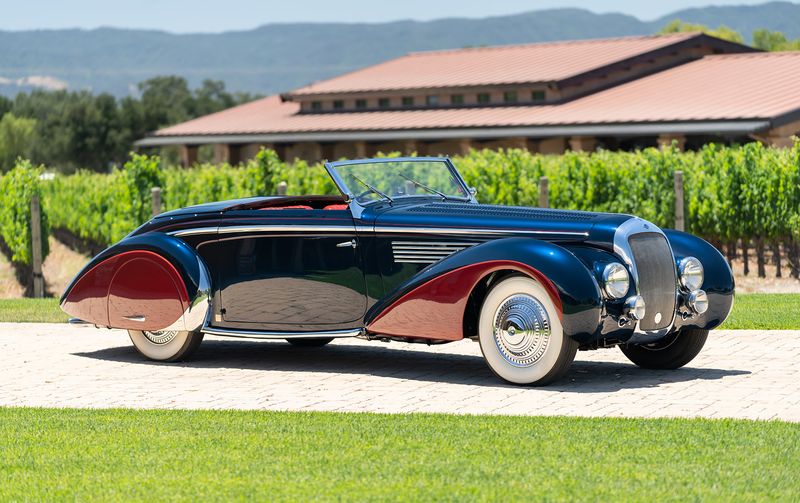
Champagne wishes and caviar dreams materialized in metal form with the breathtaking Delage D8.
Created by Louis Delage in 1929, this French masterpiece wasn’t just transportation—it was rolling sculpture that happened to move.
Beneath its impossibly long hood, the 4.0-liter straight-eight purred with aristocratic restraint while delivering surprising punch.
European royalty, Hollywood stars, and racing drivers all clamored for custom-bodied versions. When the Shah of Persia commissioned his D8, he requested solid gold dashboard instruments and silk upholstery.
Even today, a Delage D8 remains one of the most coveted collector cars, with pristine examples fetching well over $3 million!
23. Delahaye 135

Racetracks trembled when the Delahaye 135 roared to life!
Unlike its prim and proper luxury contemporaries, this French bombshell had a split personality—elegant enough for Paris fashion shows by day, ferocious enough to dominate endurance races by night.
The 3.5-liter straight-eight was practically bulletproof, powering the 135 to victory at the grueling 24 Hours of Le Mans and the treacherous Monte Carlo Rally.
During WWII, the French Resistance even used these cars for daring missions, thanks to their combination of speed and reliability.
24. Bugatti Type 57

Lightning in a bottle! The Bugatti Type 57 wasn’t just a car—it was Ettore Bugatti’s magnum opus, engineered by his son Jean.
Their 3.3-liter straight-eight wasn’t the largest or most powerful, but boy was it special.
Hand-assembled with watchmaker precision, these engines featured dual overhead cams when most cars still used primitive flatheads.
The Atlantic version, with its riveted seams and teardrop shape, remains the automotive equivalent of the Mona Lisa. Only four were built, and Ralph Lauren owns one worth an estimated $40+ million!
25. Alfa Romeo 8C
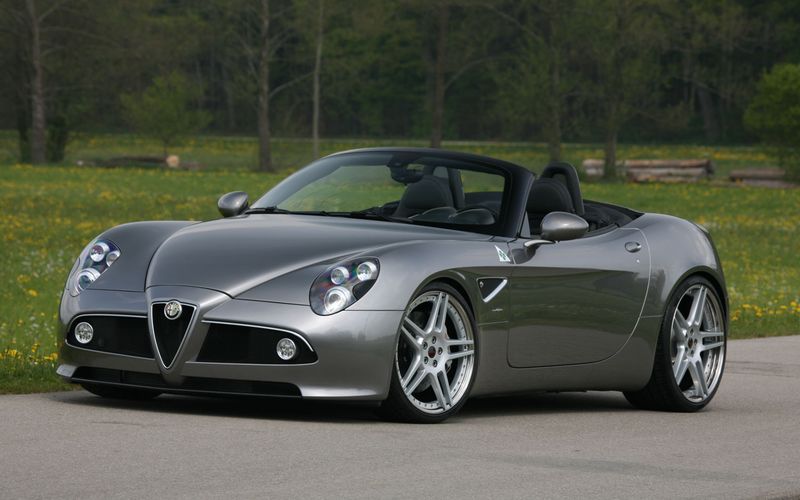
Holy mamma mia! The Alfa Romeo 8C wasn’t just fast—it was Enzo Ferrari’s favorite car before he started his own company!
This Italian thoroughbred combined Latin passion with Germanic precision, creating automotive fireworks.
Its supercharged straight-eight shrieked like an opera tenor hitting high C, propelling the 8C to victory at the Mille Miglia road race four consecutive times.
Mussolini himself ordered these cars for propaganda purposes, showcasing Italian engineering prowess against German rivals. The 8C’s DNA lives on in surprising places.
Its distinctive grille shape inspired modern Alfa designs nearly a century later, and its revolutionary independent suspension technology influenced sports cars for decades. Not bad for a design from 1931!
26. Isotta Fraschini Tipo 8A
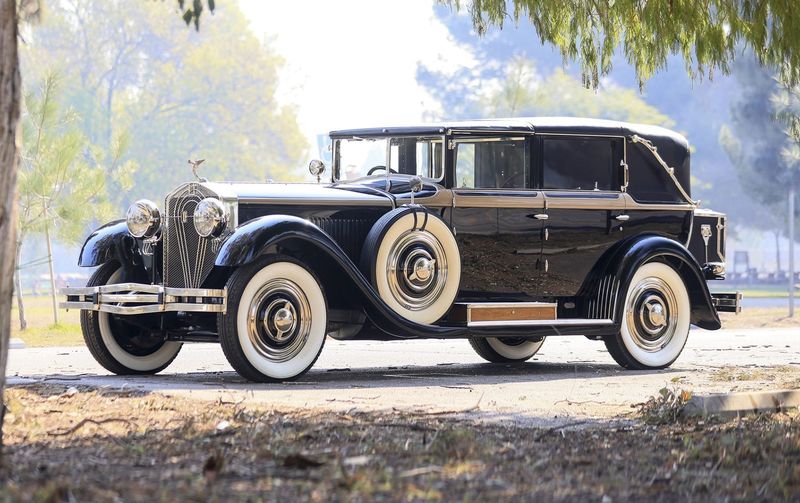
Before Lamborghinis prowled Rodeo Drive, silent film stars flaunted their wealth with the outrageous Isotta Fraschini Tipo 8A.
Rudolph Valentino, Clara Bow, and Charlie Chaplin all owned these Italian behemoths—the first production car to sport a straight-eight engine! Each Tipo 8A cost more than a mansion in 1920s dollars.
The massive 7.4-liter engine didn’t just deliver power—it provided an almost supernatural smoothness. Owners claimed they could balance a coin on edge atop the running engine without it falling over.
These cars were so synonymous with Hollywood excess that one famously appeared in Sunset Boulevard as Norma Desmond’s chariot.
“I am big—it’s the pictures that got small!” she proclaimed, from a car that was definitely not small!
27. Mercedes-Benz 770
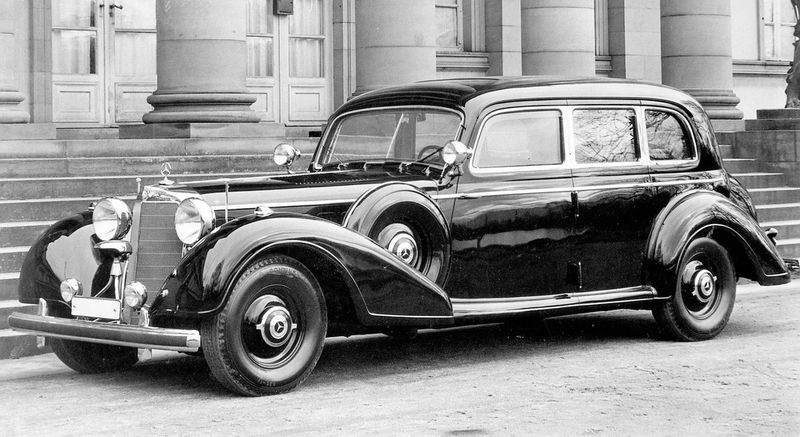
Gulp! The Mercedes-Benz 770 “Grosser” carries perhaps the darkest history of any automobile ever made.
This seven-ton leviathan packed a supercharged 7.7-liter straight-eight that could push it to 100 mph despite weighing as much as a modern SUV.
While technically brilliant, the 770 became infamous as Hitler’s parade car, often seen in Nazi propaganda films. Many featured bulletproof glass and armor plating thick enough to stop machine gun fire.
After WWII, Allied forces captured several of these monsters, including Hitler’s personal six-wheeled convertible.
Today, surviving examples sit in museums with conflicted caretakers. The cars represent both engineering excellence and humanity’s darkest chapter—mechanical marvels forever tainted by the evil they served.
28. Horch 853
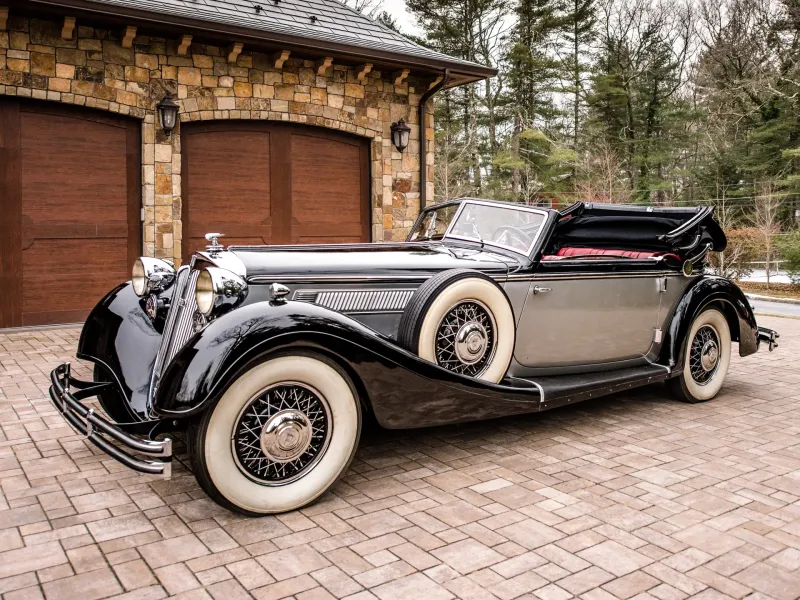
Swooping fenders and chrome for days! The Horch 853 made Mercedes look positively pedestrian in pre-war Germany.
August Horch (who later founded Audi after leaving his namesake company) created this stunner as Germany’s answer to the Hispano-Suiza.
Its 5.0-liter straight-eight wasn’t just powerful—it was over-engineered to ridiculous degrees. The crankshaft alone was machined from a 770-pound steel billet!
These cars featured the world’s first production automatic transmission and pioneered synchronized gears when most cars still required double-clutching.
After WWII, the Soviets seized the Horch factory in East Germany, and the brand vanished.
29. Tatra 80

Gliding through Prague’s cobblestone streets, the Tatra 80 wasn’t just transportation—it was a mobile throne room.
Czechoslovakian president Tomáš Masaryk demanded nothing less than this air-cooled masterpiece for official duties.
Behind its distinctive sloping grille lurked a 6.0-liter straight-eight producing a respectable 120 horsepower—modest by today’s standards but revolutionary in 1931.
The car’s backbone chassis design, pioneered by Hans Ledwinka, made it remarkably stable on rough roads.
Only about 25 examples were built, with most destroyed during WWII. The few survivors are now worth millions, treasured as symbols of pre-war Czechoslovakian industrial might.
30. Peugeot 601
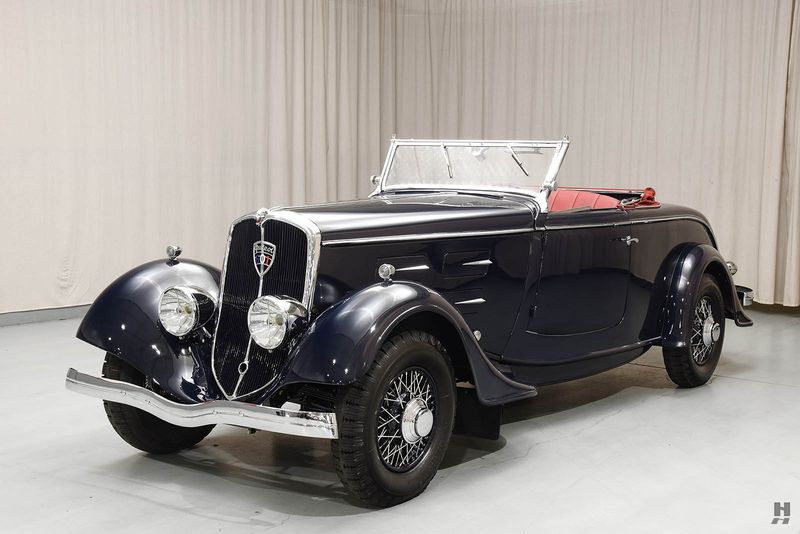
“Mon Dieu!” exclaimed Parisian socialites when the 601 Eclipse—the world’s first retractable hardtop convertible—appeared at the 1934 Paris Motor Show.
Peugeot’s flagship stunned with its revolutionary Georges Paulin-designed folding roof mechanism that disappeared into the trunk with mechanical precision.
Beneath its elegant hood, a 2.1-liter straight-eight engine purred with Gallic sophistication. Though modest at 60 horsepower, the motor’s smooth delivery perfectly matched the car’s luxurious character.
Only 3,999 examples (in all body styles) rolled out of Sochaux before production ended in 1935. The rarest Eclipse models now command astronomical sums when they occasionally surface at European auctions.
31. Hispano-Suiza J12
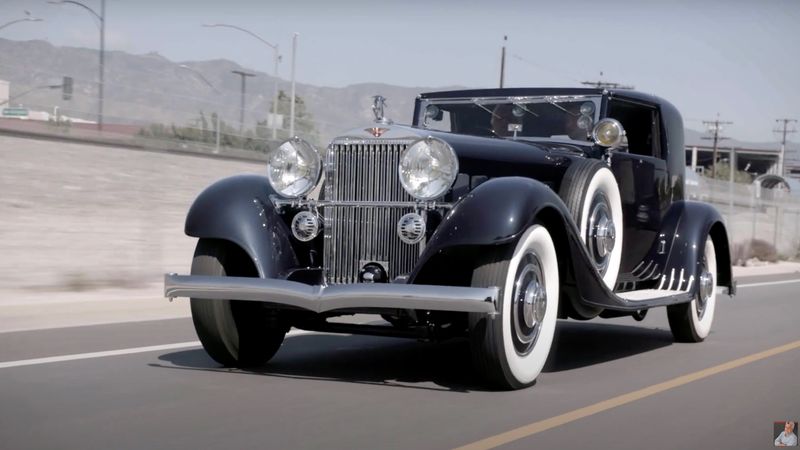
Kings and movie stars fought for delivery slots when the J12 debuted in 1931.
Swiss engineer Marc Birkigt’s 9.4-liter straight-eight masterpiece wasn’t just an engine—it was industrial sculpture, with massive aluminum cylinder blocks and artfully machined components.
Generating a thunderous 220 horsepower, the J12 could reach 100 mph while passengers relaxed in silence, barely aware of the mechanical symphony beneath the mile-long hood.
Each car required six months to build, with bodies crafted by legendary coachbuilders like Saoutchik and Figoni et Falaschi.
Marlene Dietrich owned one. So did King Alfonso XIII of Spain. With fewer than 120 built, spotting one today is rarer than finding a unicorn in your garden.
32. Lancia Astura Series IV
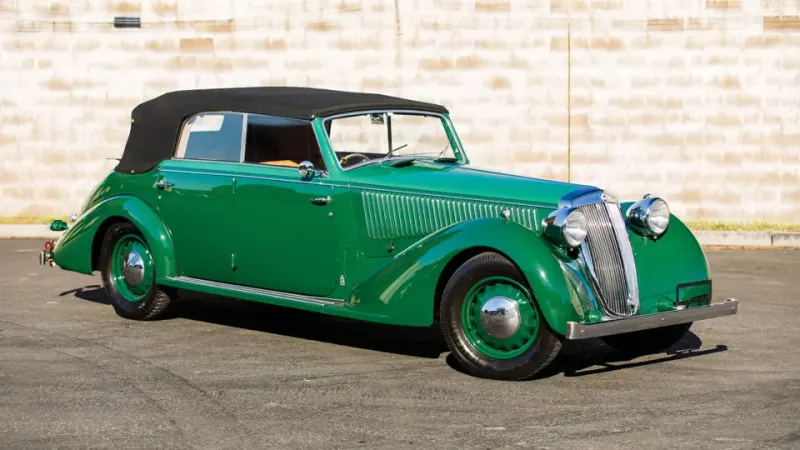
Whispered about in hushed tones, the final Series IV Asturas were automotive unicorns—just 423 examples escaped Lancia’s Turin factory before WWII halted production.
Dictator Benito Mussolini kept one in his personal garage, appreciating its blend of handling and luxury.
The heart of this Italian thoroughbred was a remarkably compact 3.0-liter straight-eight with narrow 19° V-angle between cylinder banks—a packaging marvel that allowed for shorter length.
Mounted on patented elastic blocks, the engine’s vibrations were virtually eliminated.
Coachbuilder Pininfarina created some of his earliest masterpieces on Astura chassis, including the breathtaking “Bocca” cabriolets with their distinctive oval grilles.
33. Bentley 8 Litre
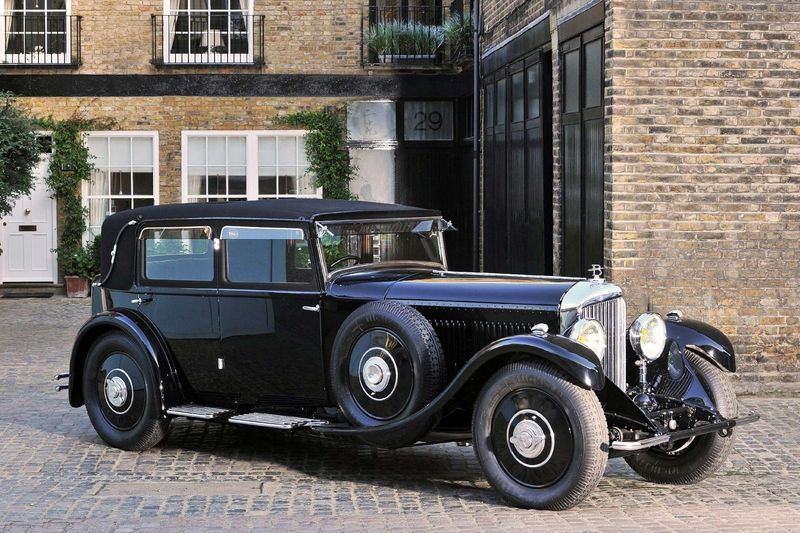
Roaring to life in the depths of the Great Depression, the 8 Litre was W.O. Bentley’s swan song—a 230-horsepower leviathan that could hit 100 mph regardless of what bodywork you bolted to its massive chassis.
Ironic timing, really, launching the company’s most expensive model just as the world economy collapsed.
Only 100 examples left the factory before Bentley Motors fell into receivership.
Rolls-Royce swooped in to purchase their struggling competitor, promptly destroying the 8 Litre to prevent it from competing with their Phantom II. W.O. himself owned chassis YF5001, the second car built.
34. Rolls-Royce Phantom III
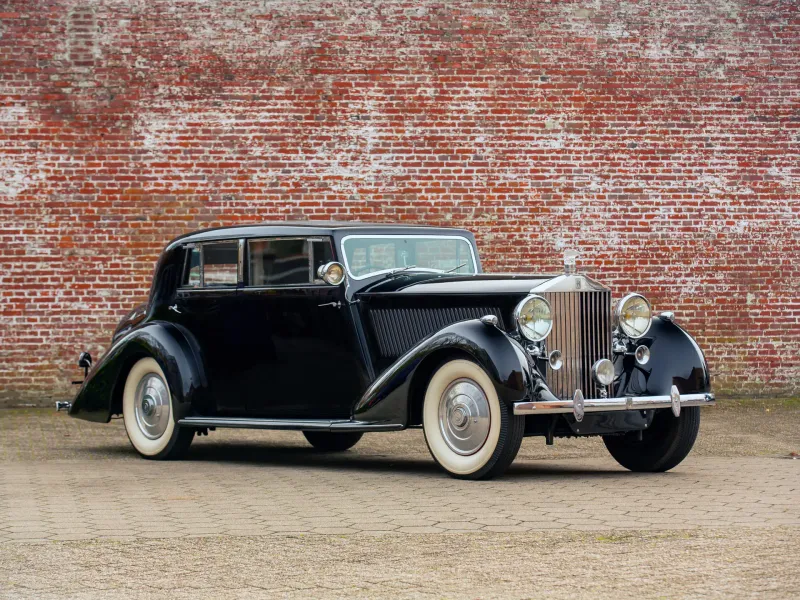
Shattering tradition, Rolls-Royce abandoned their legendary six-cylinder engines for the Phantom III, unveiling a 7.3-liter V12 that… Wait, what? A V12? In an article about straight-eights?
Plot twist! While the Phantom III indeed packed a V12, Winston Churchill secretly commissioned a one-off variant with an experimental 7.5-liter straight-eight in 1936.
Developed as a potential aircraft engine, this massive powerplant was installed in chassis #3BU168 at Churchill’s insistence.
The future Prime Minister used this unique Phantom throughout WWII for clandestine meetings, with the engine’s distinctive sound serving as an auditory signature for those in the know.
